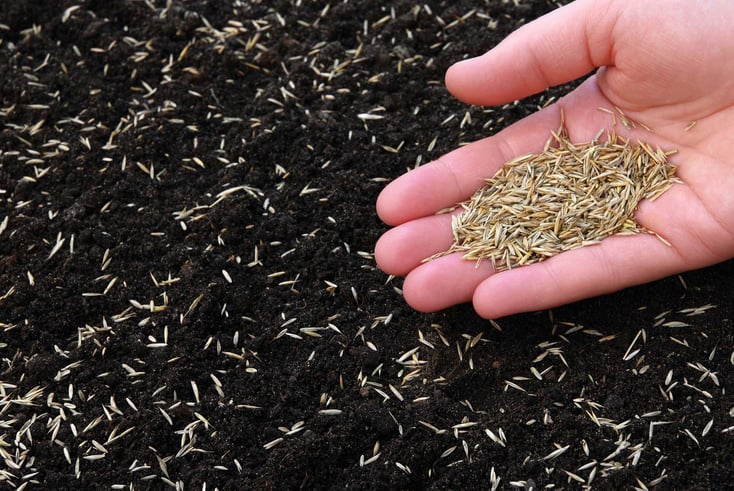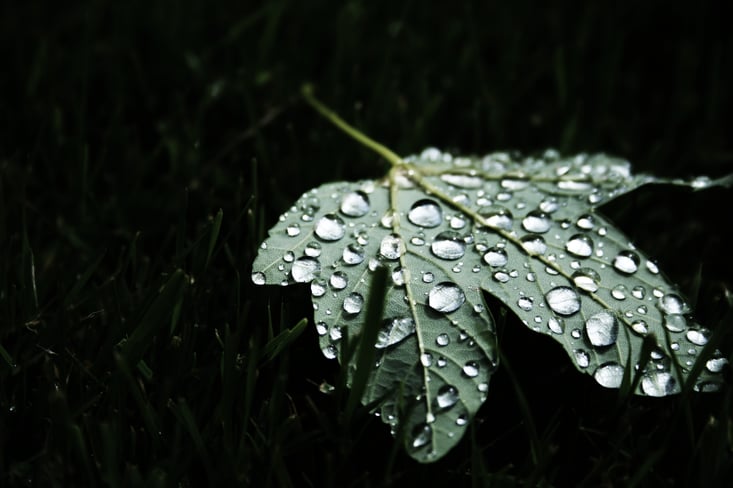

Fall is highly regarded as one of the best times of the year to plant grass seed. Taking advantage of the optimal fall growing conditions can help make establishing seed for the average do-it-yourselfer much easier. By following a few easy steps and remembering a handful of helpful guidelines, new grass will be growing in no time.
Even the best maintained lawns usually have at least one area of concern that can use seeding in some way or another. Ensuring the lawn is ready for winter is very important and this can have a major impact on how prepared it is to come back more beautiful than ever next spring.
Even the best maintained lawns usually have at least one area of concern that can use seeding in some way or another. Ensuring the lawn is ready for winter is very important and this can have a major impact on how prepared it is to come back more beautiful than ever next spring.
Seed Selection
Among many things, selecting the right type of seed is an essential step in the process of successfully establishing turf. It is very important to select a seed blend that will accommodate the growing conditions and environment it is planted in. Some grass species perform well in sun, but poorly in shade. To help make things easier, most seed manufacturers label the seed bag for the condition the blend is recommended to grow best in. For example, a bag of seed might be labeled Sun Mixture, Sun/Shade Mixture, or Shade Mixture. Most mixtures contain several species of grass so they can accommodate multiple growing conditions. Kentucky Bluegrass and Perennial Ryegrass perform best in full sun environments, while Fine Fescue can perform well in sun or shade conditions.
Timing is Everything
Fall is a great time for seeding. Soil and air temperatures are warm while natural rainfall is usually common making the establishment process optimal. Seeding beginning in late Summer (Mid August) into the early part of Fall (late September) is a good reference point to use as a seeding window. This generally gives the new seed plenty of time to germinate and fully establish before heavy frosts and cold winter temperatures come. Missing the ideal seeding window or waiting too late before seed is put down can make it very challenging as soil and air temperatures are too cool for optimal germination. Even when the seed does germinate late in the season, often these young seedlings do not survive winter as they are too young and immature for the harsh winter conditions. Heavy frost can also be hard on new seedlings making it difficult during the establishment process
Fall Dormant Seeding
Fall dormant seeding involves putting down grass seed before the ground is frozen, but yet the soil and air temperatures are far too cold for the seed to germinate at this time. Dormant seeding is typically done in November when temperatures are too low for germination. The grass seed will lie dormant until next spring when the soil temperatures warm and germination begins. Covering the seed with mulch or a very thin layer of soil will greatly increase the success of the dormant seeding.
Seed that is left fully exposed to the harsh elements has far less chance of germinating and establishing itself come spring.
Water Requirements
The most important rule to follow when establishing grass seed is “If the seed dries, it dies.” Water is essential and without it the seed cannot germinate. Maintaining a light frequent watering schedule multiple times a day until the grass fully establishes is vital. This ensures the seed always stays moist and doesn’t dry out. Watering heavy for long periods of time poses a risk of washing the seed away before it can establish itself.

Germination
The speed at which seed germinates and establishes itself can be determined by several factors. Aside from weather conditions, grass species has the biggest influence. Each species germinates at a different speed, some quicker and some slower than others. Assuming optimal weather and growing conditions, some seed can germinate in as quickly as 4-7 days, or it can take as long as 21 days before germination begins. Perennial Ryegrass is considered a quick germination grass species, while Kentucky Bluegrass is considered very slow.
Establishment and Aftercare
Depending on the grass species, it can take several weeks or months to fully establish new seedlings. As seedlings mature they develop their independent root system they require to grow healthy and withstand the natural stresses of its environment. Special aftercare is involved as it relates to mowing during establishment. New seedlings are tender and can be easily damaged if mowing frequency and mowing height are not adjusted to favour the seedlings.
Wait 4-6 weeks after full germination until regular mowing practices are adopted. Watering practices can also be adjusted to a deep and infrequent schedule provided the seedlings are not stressed. Balanced fertility is recommended to maintain and provide the essential plant nutrients the seedlings require to promote healthy establishment and growth.
Related Posts
Learn About Fall Seeding
Hey readers; are you ready to 'fall' in love with your lawn again this autumn? If so, fall...
Fall Is A Great Season For Seeding
Fall is an optimal time of year to plant grass seed in Ontario. Whether you’re overseeding or...
Tips For Repairing A Patchy Lawn
They say that beauty is in eye of the beholder, but when it comes to lawn care, I think we can all...



